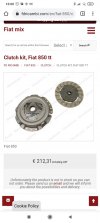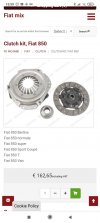The need to frequently adjust the clutch cable, combined with a rising clutch pedal height, would have me looking for a breaking/fraying clutch cable, particularly the section of cable normally hidden within the cable housing between the center tunnel rear plate & the bracket on the side of the trans. As strands of the cable weaken &/or break, it allows the rest of the cable to unwind (untwist) & lengthen, thus the need for readjustment to take up the (new) slack.
A frayed clutch cable can also have one or multiple strands of wire bunching up inside the cable housing & snagging on the interior of the housing. When the wire(s) snag, it will cause increased drag (effort) on the pedal &/or simply bind up & not allow full motion of the cable.
The simple way to check for fraying of the cable within the housing is to disconnect both ends of the cable from the bellcrank & throwout lever, tie a sturdy rope or cable to the front eyelet of the cable, then pull the rear eyelet as far back as possible (it should be a couple feet - about the length of the center tunnel). Disconnecting the cable housing from the trans bracket may make things easier, but take note to keep the front end of the housing in full contact with the center tunnel end plate, otherwise you won't be able to see/inspect the part of the cable that's normally within the housing, which is the whole purpose of this job. If no damage is found, this is a good opportunity to lube the cable before pulling it forward (using the rope**) & putting everything else back into place.
(**The purpose of temporarily installing/using the rope is to keep the front eyelet of the clutch cable from getting caught on/behind the e-brake assembly, the heater supply tubes/brackets or the battery cable inside the center tunnel as the clutch cable is moved forward & back into place after inspection. It can be a real PITA to blindly push that cable forward by itself from under the car, only to have it snag on various objects in the tunnel. Using a guide rope makes the task a lot easier to do).


